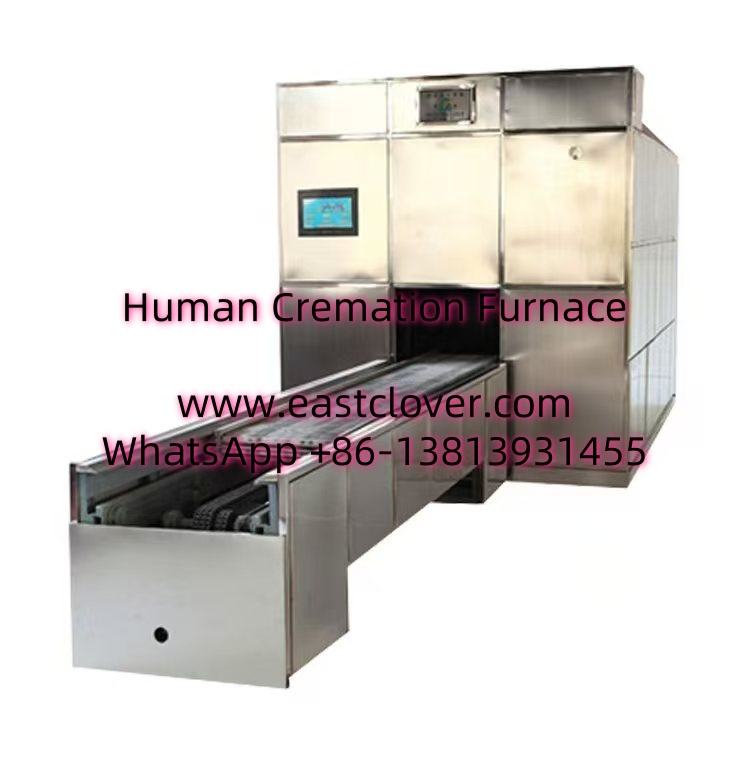Introduction to Cremation Furnace Research and Development
Cremation has become an increasingly common choice for end-of-life arrangements worldwide, driven by factors such as limited burial space, environmental considerations, and evolving cultural preferences. As demand grows, the need for efficient, environmentally sustainable cremation technologies has intensified. This has spurred significant research and development (R&D) efforts to improve cremation furnace design, with a focus on enhancing energy efficiency, reducing emissions, and ensuring regulatory compliance.
Historical Context and Challenges
Traditional cremation furnaces, developed in the mid-20th century, relied heavily on fossil fuels such as natural gas or propane. These systems often struggled with inefficiencies, including prolonged cremation times, high energy consumption, and the release of harmful pollutants like carbon monoxide (CO), nitrogen oxides (NOx), and particulate matter. Additionally, mercury emissions from dental amalgams in deceased individuals posed a persistent environmental hazard. These challenges catalyzed the modernization of cremation technology.
Key Advancements in Cremation Furnace Design
1. Advanced Combustion Systems
Modern cremation furnaces incorporate multi-stage combustion processes to optimize fuel usage. Primary chambers initiate the cremation process, while secondary chambers or afterburners ensure complete combustion of remaining gases, reducing unburned hydrocarbons and particulate emissions. Innovations like oxygen-enriched combustion and temperature modulation systems further improve efficiency, lowering fuel consumption by up to 30% compared to older models.
2. Emission Control Technologies
To address air quality concerns, R&D efforts have focused on integrating emission control systems. Scrubbers, electrostatic precipitators, and ceramic filters capture particulate matter, while catalytic converters neutralize harmful gases like CO and NOx. Mercury abatement systems, often using activated carbon or sulfur-impregnated filters, have also become standard in regions with strict environmental regulations.
3. Energy Recovery and Sustainability
Newer designs emphasize energy recovery mechanisms. Waste heat from flue gases is repurposed to preheat incoming air or generate electricity, reducing reliance on external power sources. Some facilities even channel excess heat to adjacent buildings, contributing to community energy grids. Additionally, trials with bio-based fuels and renewable energy integration aim to minimize the carbon footprint of cremation processes.
4. Automation and Smart Monitoring
Automation has revolutionized cremation operations. Sensors and IoT-enabled systems monitor temperature, airflow, and emissions in real time, adjusting parameters for optimal performance. Predictive maintenance algorithms reduce downtime, while advanced software ensures compliance with environmental standards. These innovations enhance operational consistency and safety.
Environmental and Regulatory Impact
Stringent emissions regulations, such as the European Union’s Industrial Emissions Directive (IED) and the U.S. Environmental Protection Agency (EPA) guidelines, have driven adoption of cleaner technologies. Modern furnaces now achieve emission reductions of 50–90% for key pollutants compared to legacy systems. This shift aligns with global sustainability goals, though challenges remain in balancing cost-effectiveness with environmental benefits.
Case Studies: Global Innovations
- Japan’s High-Efficiency Furnaces: With over 99% cremation rates, Japan has pioneered compact, energy-efficient furnaces using ceramic fiber insulation and AI-driven combustion controls, cutting fuel use by 40%.
- Scandinavian Bio-Cremation: Pilot projects in Sweden utilize biofuels derived from organic waste, reducing CO2 emissions by 70% while maintaining process integrity.
- North American Retrofits: Retrofitting older furnaces with afterburners and filtration systems has enabled compliance with EPA standards without requiring full replacement.
Future Directions in Cremation Technology
Emerging trends include hydrogen-fueled furnaces, plasma gasification, and alkaline hydrolysis (water cremation). Research into carbon capture and storage (CCS) for crematoria could further mitigate climate impacts. Additionally, modular furnace designs promise scalability for urban and rural settings alike.
www.southclover.com
The evolution of cremation furnace technology reflects a commitment to sustainability and efficiency. Through advancements in combustion, emission control, and energy recovery, modern systems significantly reduce environmental harm while meeting rising demand. As R&D continues, the integration of renewable energy and cutting-edge materials will likely redefine cremation’s role in a resource-conscious world.
FAQs
How do modern cremation furnaces reduce emissions?
They use multi-stage combustion, catalytic converters, and filtration systems to neutralize pollutants like CO, NOx, and mercury before release.
Are electric cremation furnaces viable?
Electric models are emerging but face challenges in energy cost and infrastructure. Hybrid systems combining electricity with renewable fuels are more practical currently.
What is the lifespan of a modern cremation furnace?
With proper maintenance, advanced furnaces can operate efficiently for 15–20 years, though components like filters require regular replacement.
How does automation improve cremation processes?
Sensors and AI optimize temperature and airflow, ensuring consistent results, reducing fuel use, and minimizing human error.
Is alkaline hydrolysis environmentally superior to flame-based cremation?
Alkaline hydrolysis uses less energy and emits no direct emissions, but its adoption depends on regulatory approval and public acceptance.

Comments are closed